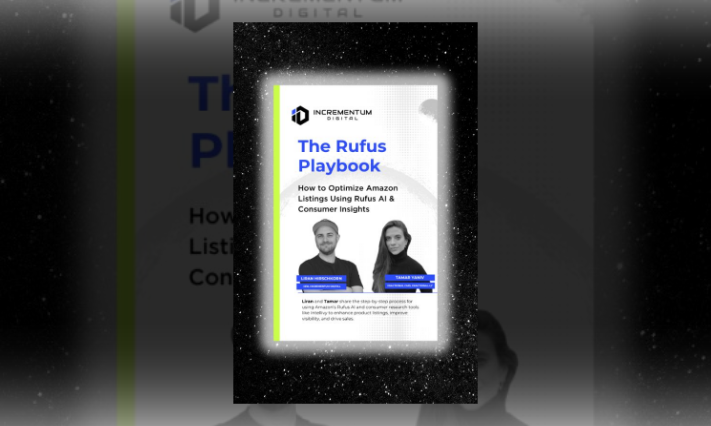eCommerce News
Plunge x Liquid Death and the Bold Future of Co-Branding

What happens when two brands from different worlds collide? You get something unexpected, bold, and attention-grabbing. That’s exactly what happened with Plunge, a wellness brand known for cold plunge tubs, and Liquid Death, the edgy water company. Together, they launched the “Freeze to Death” plunge tub—a co-branded product that took both audiences by surprise. This case study uncovers how their unconventional partnership is driving visibility, attracting new customers, and creating serious buzz across social media.

Learn How to Make Listings That Convert in 2025!
Read our step-by-step guide on how to optimize your listings using Rufus AI insights. Sign up for our newsletter and get your copy for free!
Show me howBrand Synergy: The Power of Unlikely Partnerships
At first glance, Plunge (known for wellness-focused cold plunge tubs) and Liquid Death (a water brand with the swagger of a heavy metal band) seem like they’d be on completely different wavelengths. One is all about health and rejuvenation, the other thrives on edgy humor and skull-crushing hydration. So why does their partnership for the “Freeze to Death” plunge tub make so much sense?
It’s all about synergy.
Both brands thrive on rebellion. Plunge is disrupting the wellness space by making cold plunges cool (pun intended) for a broader, more adventurous crowd. Meanwhile, Liquid Death is flipping the water industry on its head by turning something as simple as hydration into a rebellious act. What brings them together is their shared love for challenging the status quo.
This is where co-branding magic happens. Even though they’re from different industries, Plunge and Liquid Death share a core ethos: they’re not here to play it safe. By aligning on brand personality and tone, they’ve created a partnership that speaks directly to consumers who want more than the same old wellness routines and bland water bottles. They want experiences that make them feel alive—whether that’s plunging into freezing water or cracking open a tall can of Liquid Death.
When co-branding works, it’s because both brands bring something to the table that amplifies the other. Liquid Death’s edgy vibe opens Plunge up to a new audience that might not have considered cold plunging. On the flip side, Plunge’s wellness credibility gives Liquid Death the chance to go beyond just quenching thirst—now, it’s part of a bigger self-care movement.
Target Audience Overlap: Unlocking New Customer Segments
At their core, Plunge and Liquid Death cater to very distinct groups. Plunge draws in health-conscious individuals—those who are all-in on wellness, recovery, and the physical benefits of cold plunging. Meanwhile, Liquid Death speaks to a younger, rebellious demographic that craves bold, out-of-the-box experiences. But this partnership opens doors to new customer segments for both.
For millennials and Gen Z, wellness is evolving into something beyond just fitness—it’s about embracing unique, extreme experiences that push limits. Cold plunging, once an exclusive health trend, is becoming increasingly popular among this generation. By partnering with Liquid Death, Plunge gains access to this audience, connecting with those who might be looking for the next wellness frontier, wrapped in a brand that’s anything but conventional.
On the flip side, Liquid Death enters the wellness world with credibility through this collaboration. It’s not just a water brand anymore; it becomes part of a broader wellness lifestyle, appealing to consumers who value health but still want something edgy, fun, and disruptive. This partnership allows Liquid Death to expand its appeal to those already investing in self-care and performance-enhancing practices like cold plunging.
Through this co-branding, both brands cross-promote and extend their reach, speaking to audiences that might not have previously engaged with them. Plunge gets the chance to attract younger, thrill-seeking wellness enthusiasts, while Liquid Death connects with a crowd that cares about more than just a brand’s image—they care about products that deliver real benefits.
Product Differentiation: Standing Out with Co-Branding
In a market packed with choices, exclusivity is one of the sharpest tools for standing out. The limited-edition “Freeze to Death” plunge tub is a prime example of how co-branded products can create a buzz that separates brands from the competition.
Exclusivity builds scarcity, and scarcity drives urgency. When customers know a product won’t be around forever, it triggers the “fear of missing out” (FOMO) effect. This co-branded tub can become a collectible, something fans of both brands wanted to claim before it disappeared. Limited-edition products often justify a premium price, as consumers are willing to pay more for something rare and tied to their favorite brands.
The “Freeze to Death” tub also worked because it fit both brands’ identities. It’s bold, unconventional, and memorable—everything Liquid Death and Plunge stand for. More than a cold plunge tub, it can be a statement piece that draws attention because of its unexpected, edgy branding. For fans of these brands, it was a no-brainer.
The Brand Growth Potential of Co-Branding
While we’ve yet to see the results on whether this “Freeze to Death” tub will make waves, it’s clear that co-branding presents several benefits:
It can help increase sales of limited-edition products.
The exclusivity, combined with the unique branding, created a sense of urgency that pushed fans of both brands to make quick purchases before the product disappeared. Limited-edition products have a proven track record of driving higher demand and premium pricing.
For instance, the Nike x Ben & Jerry’s “Chunky Dunky” sneaker collaboration demonstrates this perfectly. This unexpected partnership created one of the most hyped sneakers of 2020, selling out immediately upon release. On resale markets, these limited-edition sneakers were fetching prices of almost $3,000, showcasing the power of exclusivity and unique branding in driving demand and premium pricing.
It can boost brand awareness.
Each brand would already have its own loyal audience, but co-branding allows them to tap into each other’s customer bases, broadening their reach and positioning them in front of fresh eyes.
Buitoni, a pasta maker, teamed up with Impossible Foods, known for its plant-based meat products, to create two plant-based, ready-to-eat pasta dishes. This collaboration capitalized on the growing trend of plant-based diets and allowed both brands to reach new audiences. Buitoni was able to attract health-conscious consumers looking for meat alternatives, while Impossible Foods gained exposure in the grocery sector beyond its restaurant partnerships. The success of this co-branding effort introduced innovative products to the market and helped both brands enhance their visibility and market presence.
It can be a strategic move for new customer acquisition.
Fans of Liquid Death who may not have considered cold plunging before are now introduced to it through a familiar brand. Similarly, wellness enthusiasts loyal to Plunge now see Liquid Death in a different light—as part of their holistic health journey.
Strategic Takeaways for Your Own Co-Branding Success
Co-branding is a powerful tool, but it needs to be done thoughtfully to succeed. (Even Amazon and TikTok have partnered up.) Here are actionable strategies for brands to make the most of a co-branding partnership:
1. Partner Alignment
The most critical factor is choosing a brand that complements your identity, even if it operates in a completely different industry. Look for partners who share a similar mindset or appeal to a comparable audience. A good fit creates a seamless collaboration that feels natural, not forced. Think beyond traditional pairings; creativity here pays off.
2. Shared Values
For co-branding to resonate with both audiences, the partnership needs to be built on shared values. Make sure your partner’s mission aligns with your own, whether it’s a focus on sustainability, wellness, or breaking industry norms. When consumers see that your collaboration is authentic and value-driven, it strengthens trust and boosts engagement.
3. Exclusive Products/Experiences
Offering something unique or limited-edition is a tried-and-true way to generate excitement. Create buzz with products or experiences that your audience can’t get anywhere else. Limited-edition items add a sense of urgency and exclusivity, encouraging immediate action from your customer base while reinforcing the special nature of the partnership.
4. Marketing Strategy
Maximize the impact of your partnership by leveraging cross-promotion. Use each brand’s strongest channels—whether that’s social media, email marketing, or influencer campaigns. Co-create content that tells a story and launch the product or experience with a bang. Strong coordination on the marketing front amplifies your reach and gets both brands in front of new audiences.
5. Measure Success
Finally, keep the focus on measurable outcomes. Track metrics like engagement, brand awareness, and sales to evaluate the partnership’s success. Look at how the co-branded effort increases traffic to your website, boosts social media interactions, or converts new customers. Having clear goals and data to back them up ensures you’re getting the return on investment you’re aiming for.
Overall, co-branding works best when there’s strong alignment, shared values, and a well-executed marketing plan. By focusing on these elements, brands can create something that’s not only impactful but also measurable and repeatable.
Conclusion
The Plunge x Liquid Death partnership is a perfect example of how co-branding can bring two seemingly different brands together to create something unforgettable. By aligning their rebellious, unconventional styles, they managed to differentiate themselves in a crowded market, expand their reach by tapping into new customer bases, and do it all with a cost-effective marketing strategy that maximized resources.
Co-branding is a smart, scalable tool for driving growth. Whether you’re looking to increase visibility, access new audiences, or create buzz around your products, the right partnership can help you achieve those goals faster and more effectively.
LET’S DISCOVER WHAT’S POSSIBLE FOR YOUR BRAND
We’re here to listen and uncover opportunities tailored to your unique goals.
Fill out the form to get started, and you’ll walk away with real insights and actionable recommendations—whether we work together or not.
- HANDS-ON LEADERSHIP
- AWARD-WINNING PARTNERSHIPS
- CUSTOM-BUILT SOLUTIONS




